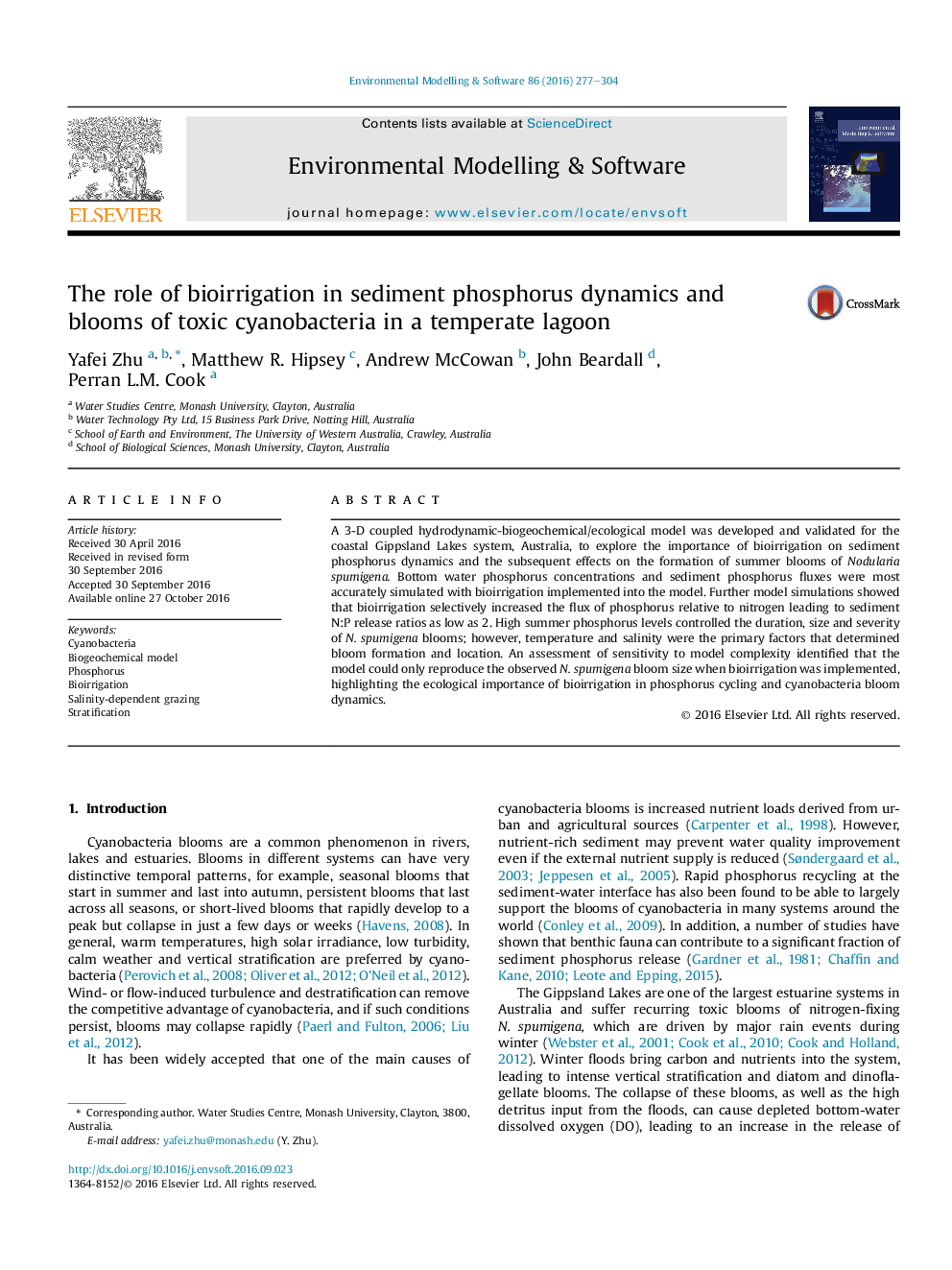| Article ID | Journal | Published Year | Pages | File Type |
|---|---|---|---|---|
| 4978315 | Environmental Modelling & Software | 2016 | 28 Pages |
Abstract
A 3-D coupled hydrodynamic-biogeochemical/ecological model was developed and validated for the coastal Gippsland Lakes system, Australia, to explore the importance of bioirrigation on sediment phosphorus dynamics and the subsequent effects on the formation of summer blooms of Nodularia spumigena. Bottom water phosphorus concentrations and sediment phosphorus fluxes were most accurately simulated with bioirrigation implemented into the model. Further model simulations showed that bioirrigation selectively increased the flux of phosphorus relative to nitrogen leading to sediment N:P release ratios as low as 2. High summer phosphorus levels controlled the duration, size and severity of N. spumigena blooms; however, temperature and salinity were the primary factors that determined bloom formation and location. An assessment of sensitivity to model complexity identified that the model could only reproduce the observed N. spumigena bloom size when bioirrigation was implemented, highlighting the ecological importance of bioirrigation in phosphorus cycling and cyanobacteria bloom dynamics.
Related Topics
Physical Sciences and Engineering
Computer Science
Software
Authors
Yafei Zhu, Matthew R. Hipsey, Andrew McCowan, John Beardall, Perran L.M. Cook,
